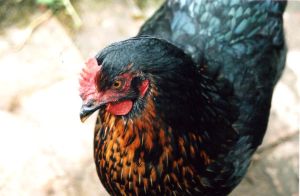FROM BRITISH MAGAZINE

NEXT LIFETIME DON'T BE A CHICKEN IN BRITAIN!PROBLEM IS, THINGS ARE THE SAME IN AMERICA
UNTIL TODAY!LA Times: California's egg laying hens to get their breathing room
Dec 26 2014Santa has been good to the chickens. A little bit. Next month, all of California's 15 million egg laying hens must be freed from the cramped, restrictive battery cages that have long been used on most egg farms. In the future, they will have enough space to stand up, lie down, turn around, and spread their wings without touching another bird.
Though they are no doubt unaware of it, they have waited more than six years and four lawsuits for the extra space. Proposition 2, which passed in 2008 by a landslide 63.5% of the vote, also covers gestating pigs and veal calves but there are few pig and veal corporations in the state, so the law's biggest effect is on the hens. A separate law requires all out of state egg producers that sell to California (which gets about a third of its eggs from farmers outside the state,) to comply with the same housing standards for hens.
Not surprisingly, egg producers have sued, variously arguing that Proposition 2 is vaguely worded or that he companion law unconstitutionally interferes with interstate commerce. All the suits have been dismissed. Two ---including one brought by a group of state attorneys general led by Christ Koster of Missouri -- are under appeal.
Despite the backlash from egg producers and their allies, it is clear that these measure reflect a growing concern on the part of consumers abut the welfare of farm animals. Just because they are certain to end up on a dinner plate or in a barn producing eggs or milk, doesn't obviate the need to treat them humanely during their short lives.
It would be prudent for egg producers to end their legal challenges and start retrofitting their barns. They've had years to figure out how to create housing that meets the requirements of the law. The typical minuscule wire-mesh battery cages, offering 67 square inches of space per hen, won't do any longer. Many farmers are converting to bigger, taller colony cages that offer about 116 square inches of space and allow birds to move around in accordance with the law. Some produces are modifying existing battery cages to make one enclosure out of two or more.
Some producers are going even further than required, setting up completely cage free barns for birds, allowing them to move around and even fly to different level perches. And some major food companies are requiring that their egg suppliers go cage free. The food services company ARAMARK uses only cage free eggs in its California operations and has announced that all of he 30 million eggs it buys annually in the USA will come from cage free hens by the end of this year. Unilever is well into the process of converting to cage free eggs. Burger King has committed to having all of its eggs come from cage free animals by 2017.
California voters, to their credit, were ahead of the game in voting to better the welfare of California's Hens. Over time, that will lead to improvements for all 300 million egg laying hens in the country.

We still want marital visitation rights!<===BACK TO THE CHICKEN PROTECTION LEAGUE INDEX PAGE